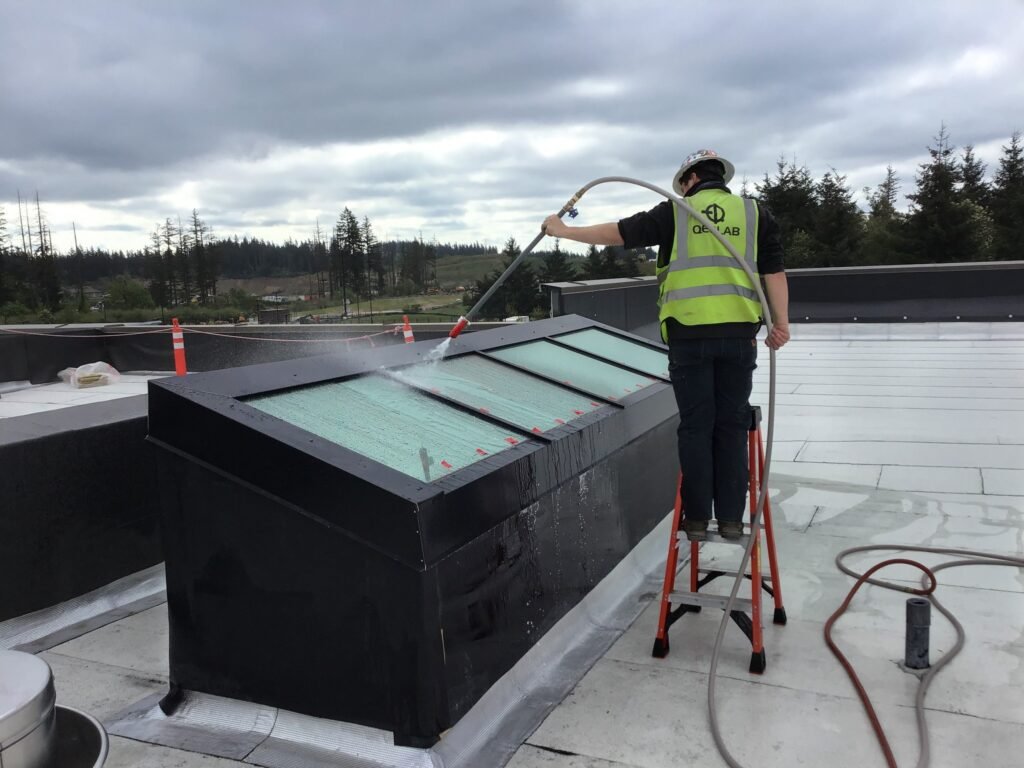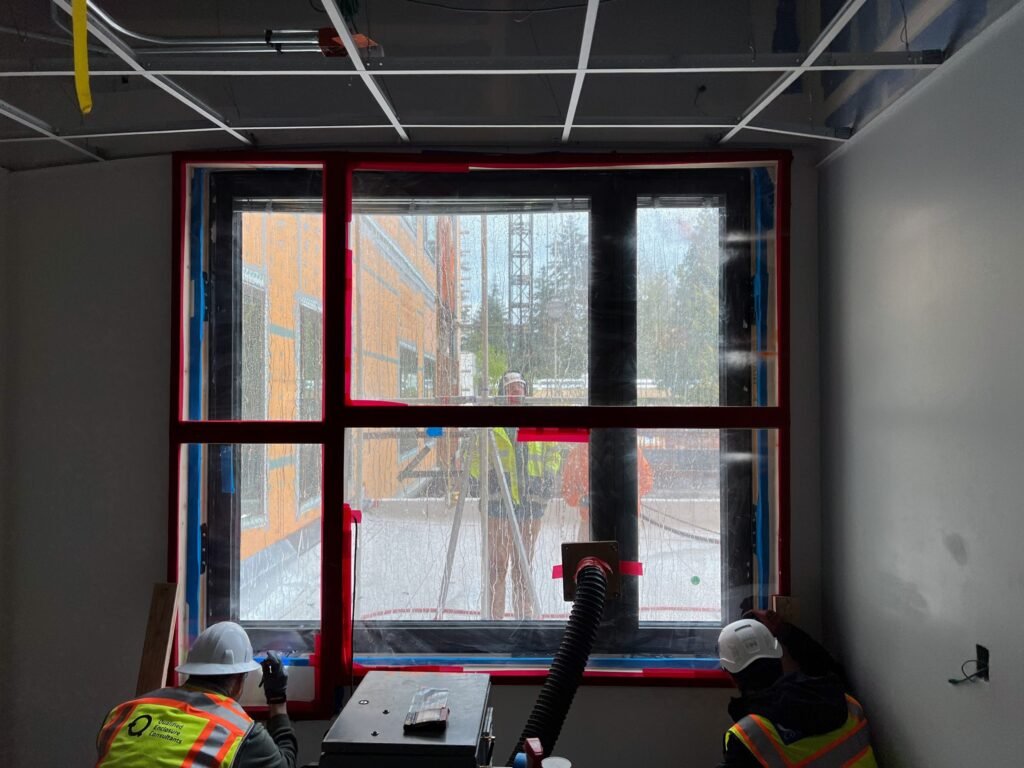Water Leakage Testing
Water Leakage Testing for Building Enclosures
Water leakage testing is a critical step in ensuring the performance and durability of building enclosures. Even small amounts of uncontrolled water intrusion can cause significant damage over time, leading to compromised structural components, costly repairs, and reduced occupant comfort. Testing provides assurance that windows, doors, storefront systems, curtain walls, skylights, wall assemblies, and roof assemblies perform as designed to keep water out under real-world conditions.
A variety of industry-recognized methods guide water penetration testing. ASTM E1105 is the most widely applied test for windows, curtain walls, and doors, simulating wind-driven rain using calibrated spray racks and controlled pressure differentials. For field applications, standards such as AAMA 502 and AAMA 503 verify water resistance of newly installed fenestration systems, while AAMA 501.2 uses a calibrated water spray and hose method for curtain wall and storefront inspections. These tests not only confirm compliance with specifications but also provide building owners and project teams confidence that their enclosures meet performance requirements.


In addition to performance verification, water leakage testing is also central to leak investigations and diagnostics. When buildings experience leaks, testing methods like ASTM E2128 provide a systematic approach to evaluate the sources of water intrusion. Similarly, AAMA 511 offers guidance for forensic water penetration testing, ensuring investigations follow a consistent and scientific methodology. These diagnostic tools allow teams to pinpoint failure locations and develop effective repair strategies.
By applying both performance testing and diagnostic investigations, water leakage testing helps extend the life of building enclosures, reduce long-term maintenance costs, and safeguard occupant health and comfort. Whether in new construction or existing buildings, it is a vital practice for ensuring the integrity and reliability of critical building systems.
Frequently Asked Questions About Water Leakage Testing
What building components can be tested for water leakage?
Windows, doors, storefronts, curtain walls, skylights, wall assemblies, and roof assemblies can all be tested to verify performance against water intrusion.
Which standards are most commonly used for water leakage testing?
ASTM E1105 is the primary standard for fenestration systems, while AAMA 502 and 503 address field testing of windows and curtain walls, and AAMA 501.2 covers hose testing for storefronts and curtain walls.
How does diagnostic water leakage testing differ from performance testing?
Performance testing confirms that newly installed systems meet design specifications, while diagnostic testing investigates leaks in existing buildings to identify sources of water intrusion.
What standards guide leak investigations in existing buildings?
ASTM E2128 provides a systematic approach for water intrusion investigations, and AAMA 511 outlines best practices for forensic water testing.
Why is water leakage testing important for building owners and project teams?
It helps verify compliance with specifications, prevents costly repairs, protects structural integrity, and ensures a healthier, more comfortable environment for occupants.
Looking for more information about Building Envelope Testing?
At QED LAB, we offer a Lunch and Learn where we provide valuable insights into code requirements and building envelope testing. Our experts will explain how these tests are performed and meet compliance with building codes. Join us for lunch and learn more about building envelope testing today!
